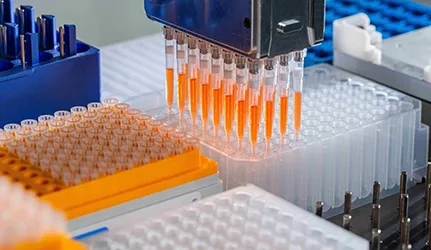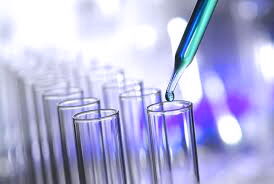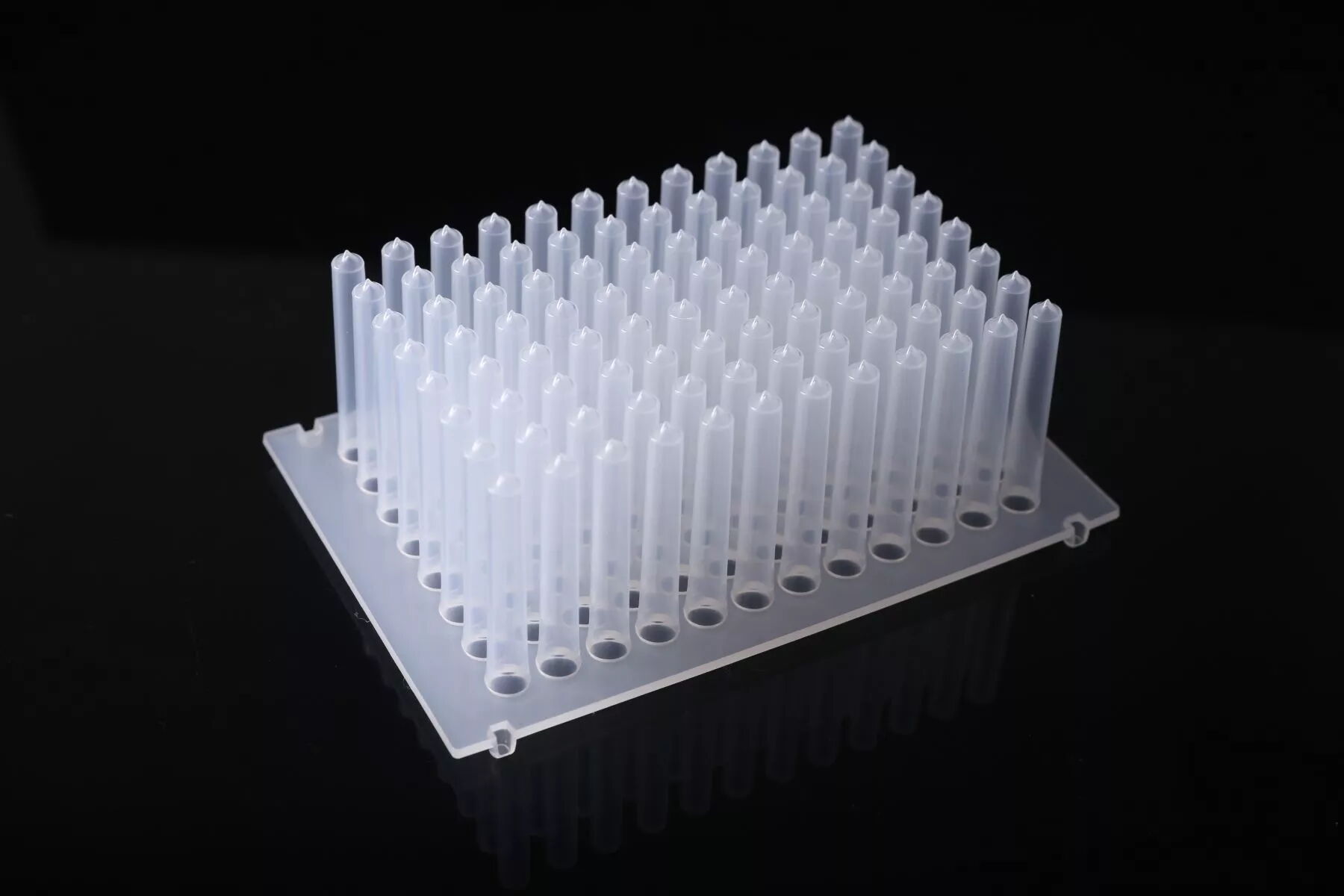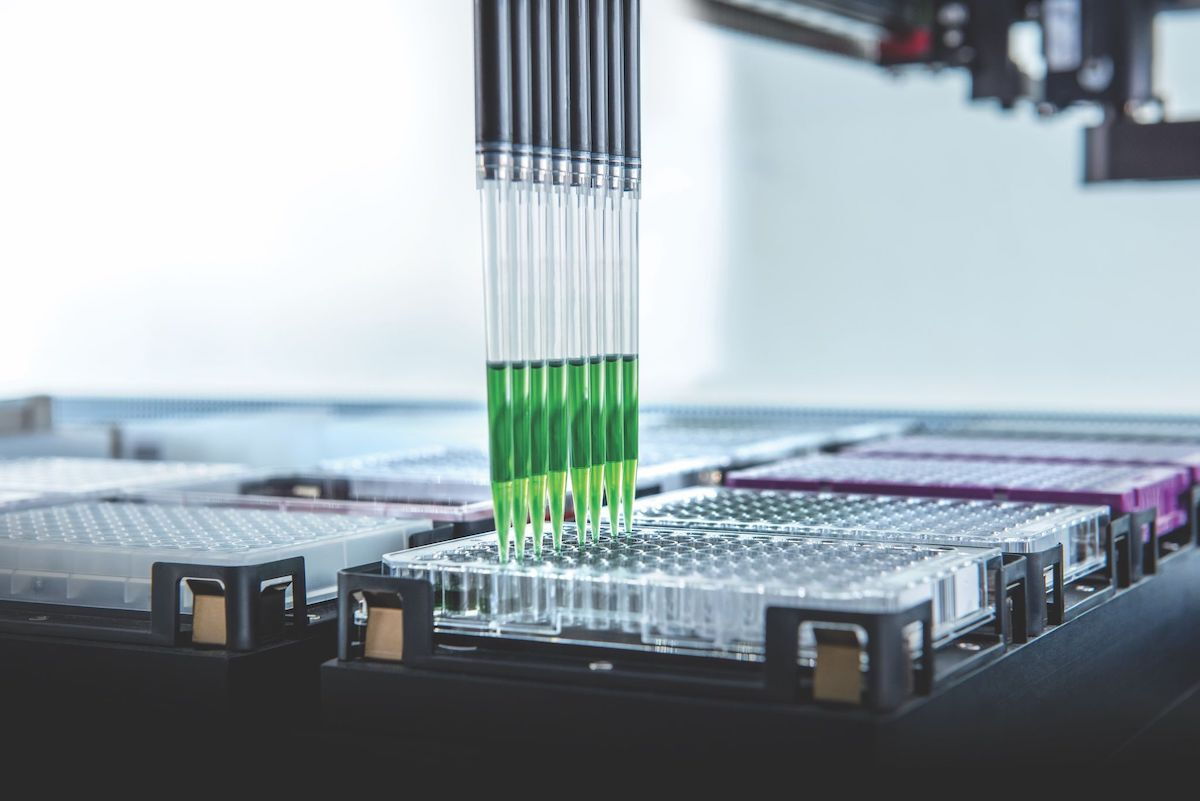Introduction of Automated Pipetting
Mar 06, 2024
In biological laboratories, pipettes and tips are the most commonly used tools for liquid handling operations. Compared to tools like Pasteur pipettes, pipettes offer better precision and accuracy, meeting diverse liquid handling needs. While pipettes suffice for low-throughput operations, multi-channel pipettes and electronic pipettes come into play for slightly higher throughput. However, in the realm of ultra-high throughput operations, traditional pipettes may fall short.

Automated Liquid Handling Workstations: Automated liquid handling workstations serve as an alternative to traditional manual pipettes, automating the process of liquid transfer. These workstations offer advantages such as increased speed, accuracy, and throughput compared to traditional pipetting methods, enhancing liquid handling efficiency and freeing up human resources. They find extensive application in fields requiring large-scale liquid handling, such as biopharmaceuticals, genetic sequencing, hospitals, and disease control centers. Currently, the market is dominated by imported brands such as Beckman, Tecan, and Hamilton, with these three brands being the most prevalent. Other brands include Thermo, Agilent, and various domestic manufacturers. Furthermore, liquid handling workstations can be integrated with other automated equipment such as nucleic acid extraction workstations to complete an entire automated workflow. A typical fully automated liquid handling workstation comprises several components, including the pipetting module, which combines with pipettes tips to perform liquid handling operations; the monitoring module, which monitors pipetting status to ensure accuracy; the workbench, which holds containers; and software, which controls the pipetting module and monitors the pipetting process.
Automated Tips: Automated tips are specifically designed for compatibility with workstations. Unlike standard tips, which may come in dedicated or universal types, workstation tips are typically proprietary and designed to fit a specific brand and model. Manufacturers of liquid handling workstations typically produce matching tips, while other brands offer a variety of commonly used brands of automated tips. Some domestic brands also offer adapters to fit Beckman or Tecan systems, among others, at relatively lower prices. Despite the various brands available, the core of using an automated system remains ensuring the accuracy of liquid handling. Without manual operation, ensuring the tightness of each tip connection and the consistency of liquid volume in each channel to minimize errors becomes a priority for liquid handling workstations. Many workstations are equipped with liquid level detection technology to enhance the accuracy of liquid handling. In essence, ensuring that the tip is at the appropriate height in the liquid during aspiration is crucial to avoid inaccuracies in liquid handling. Currently, there are several types of liquid level detection technologies available, including pressure sensing technology that monitors pressure changes, capacitive sensor technology that detects changes in the electrical properties of the liquid, and sensor technology that detects the time difference in wave (sound, light) transmission between liquids, among others. In fact, in addition to liquid handling workstations, many automated devices utilize liquid level detection technology.
In conclusion, while pipettes remain indispensable in biological laboratories, automated liquid handling workstations offer significant advantages in terms of speed, accuracy, and throughput, particularly in scenarios requiring ultra-high throughput operations. These workstations, along with automated tips equipped with liquid level detection technology, ensure precise and efficient liquid handling, thereby enhancing laboratory productivity and safety. As technology continues to advance, the role of automation in liquid handling processes is expected to expand further, driving innovation and efficiency in biological research and diagnostics.

Automated Liquid Handling Workstations: Automated liquid handling workstations serve as an alternative to traditional manual pipettes, automating the process of liquid transfer. These workstations offer advantages such as increased speed, accuracy, and throughput compared to traditional pipetting methods, enhancing liquid handling efficiency and freeing up human resources. They find extensive application in fields requiring large-scale liquid handling, such as biopharmaceuticals, genetic sequencing, hospitals, and disease control centers. Currently, the market is dominated by imported brands such as Beckman, Tecan, and Hamilton, with these three brands being the most prevalent. Other brands include Thermo, Agilent, and various domestic manufacturers. Furthermore, liquid handling workstations can be integrated with other automated equipment such as nucleic acid extraction workstations to complete an entire automated workflow. A typical fully automated liquid handling workstation comprises several components, including the pipetting module, which combines with pipettes tips to perform liquid handling operations; the monitoring module, which monitors pipetting status to ensure accuracy; the workbench, which holds containers; and software, which controls the pipetting module and monitors the pipetting process.
Automated Tips: Automated tips are specifically designed for compatibility with workstations. Unlike standard tips, which may come in dedicated or universal types, workstation tips are typically proprietary and designed to fit a specific brand and model. Manufacturers of liquid handling workstations typically produce matching tips, while other brands offer a variety of commonly used brands of automated tips. Some domestic brands also offer adapters to fit Beckman or Tecan systems, among others, at relatively lower prices. Despite the various brands available, the core of using an automated system remains ensuring the accuracy of liquid handling. Without manual operation, ensuring the tightness of each tip connection and the consistency of liquid volume in each channel to minimize errors becomes a priority for liquid handling workstations. Many workstations are equipped with liquid level detection technology to enhance the accuracy of liquid handling. In essence, ensuring that the tip is at the appropriate height in the liquid during aspiration is crucial to avoid inaccuracies in liquid handling. Currently, there are several types of liquid level detection technologies available, including pressure sensing technology that monitors pressure changes, capacitive sensor technology that detects changes in the electrical properties of the liquid, and sensor technology that detects the time difference in wave (sound, light) transmission between liquids, among others. In fact, in addition to liquid handling workstations, many automated devices utilize liquid level detection technology.
In conclusion, while pipettes remain indispensable in biological laboratories, automated liquid handling workstations offer significant advantages in terms of speed, accuracy, and throughput, particularly in scenarios requiring ultra-high throughput operations. These workstations, along with automated tips equipped with liquid level detection technology, ensure precise and efficient liquid handling, thereby enhancing laboratory productivity and safety. As technology continues to advance, the role of automation in liquid handling processes is expected to expand further, driving innovation and efficiency in biological research and diagnostics.
Previous: Understanding Label Claims on Biological Consumables
Next: How to Accurately Obtain Experimental Results in PCR



